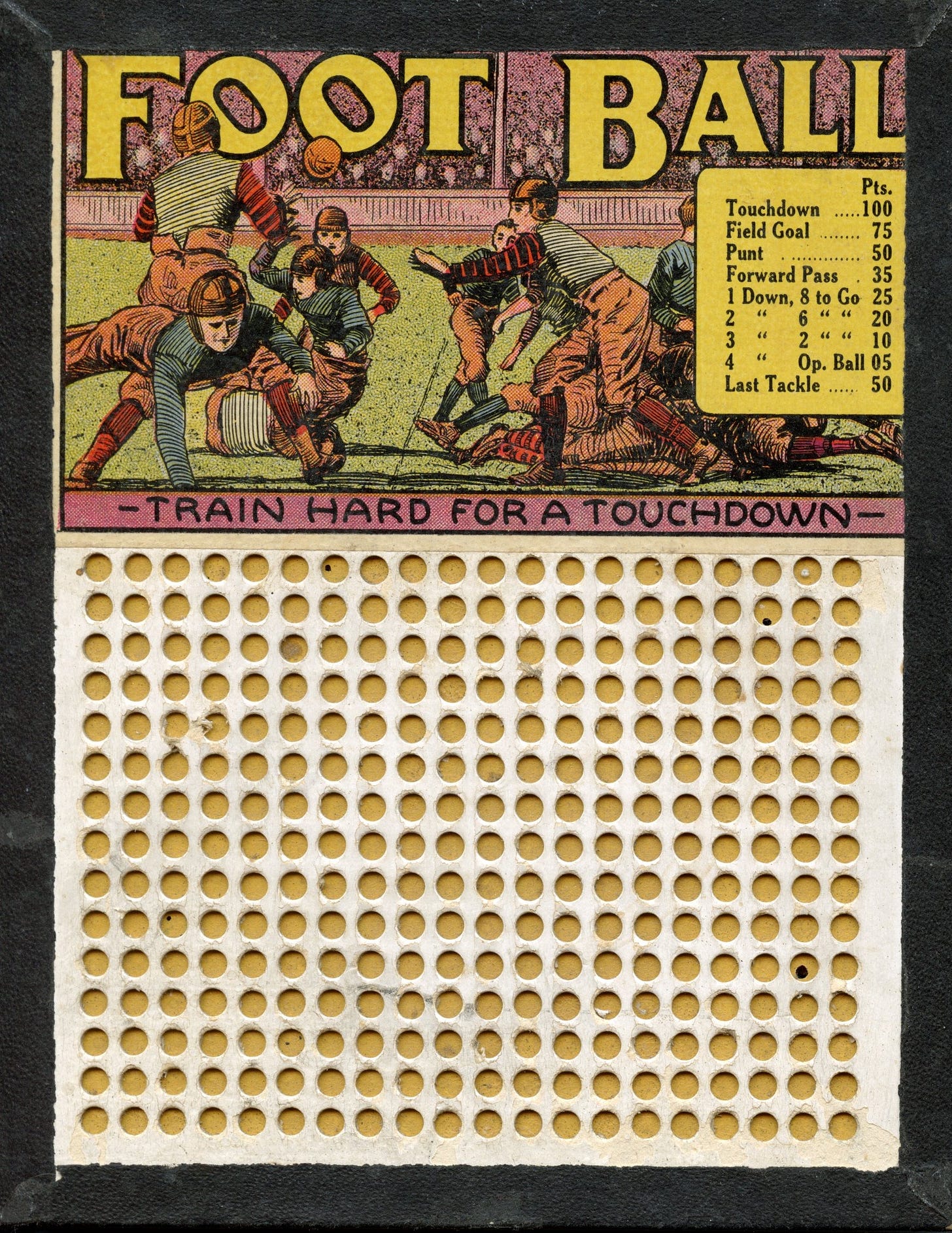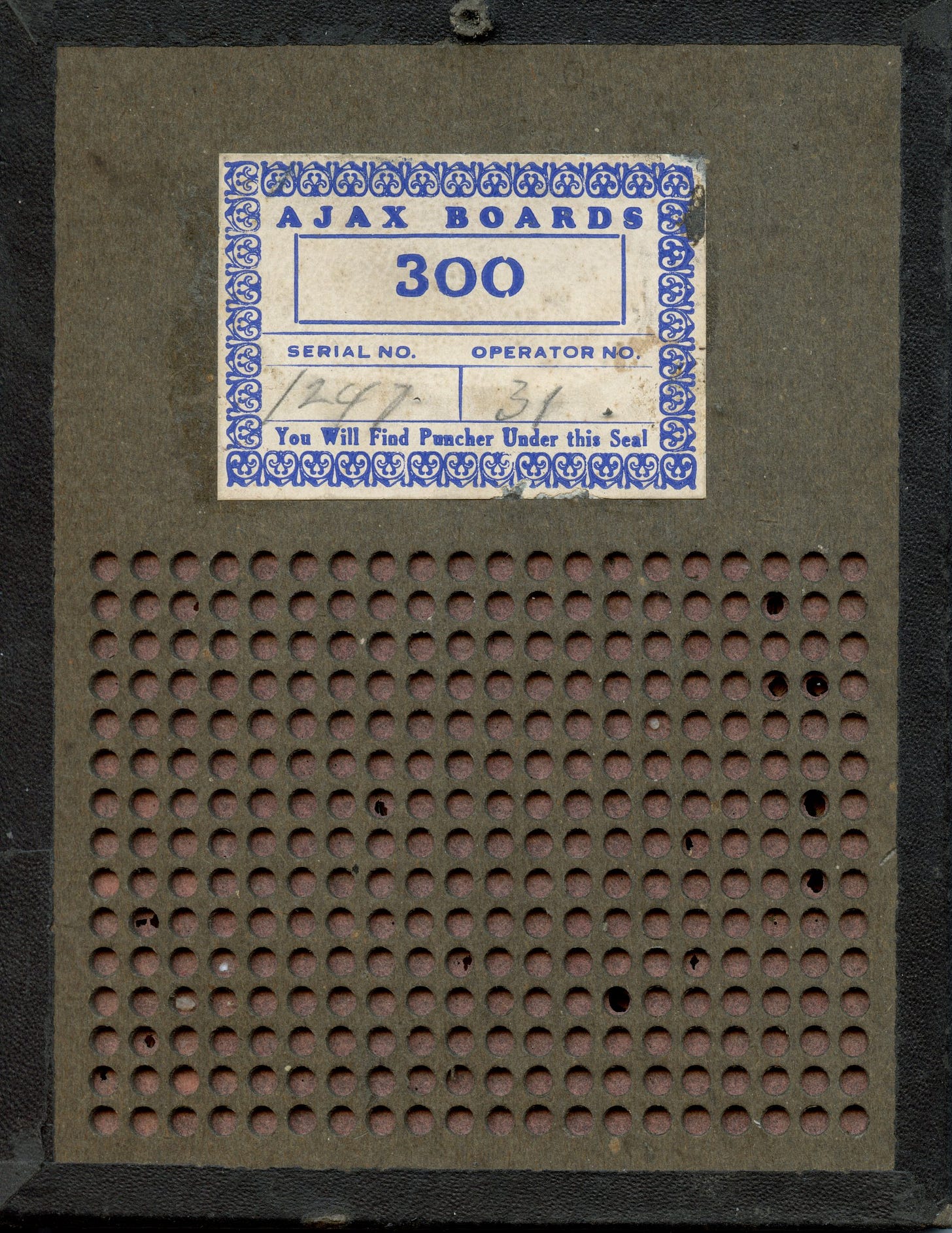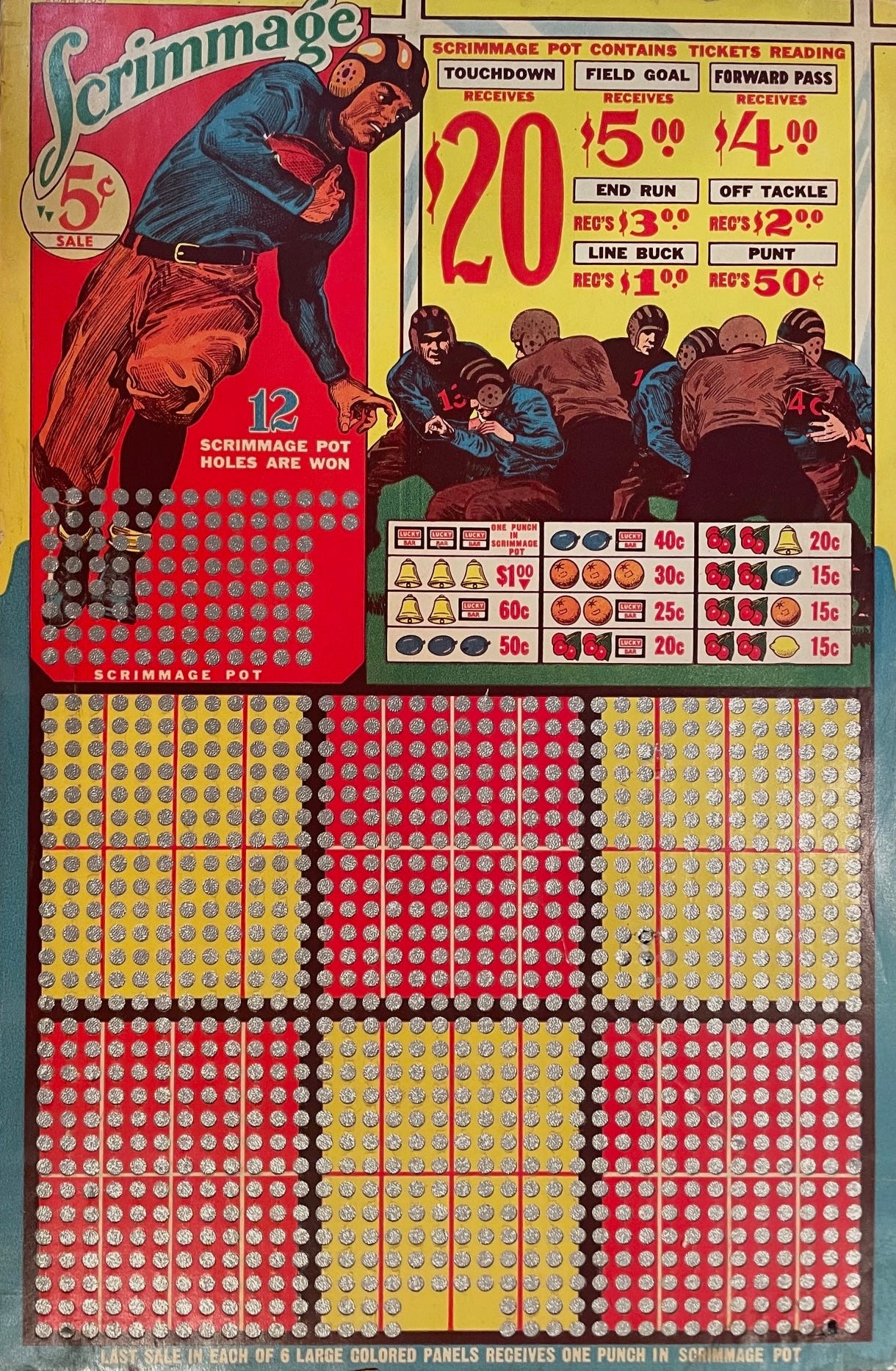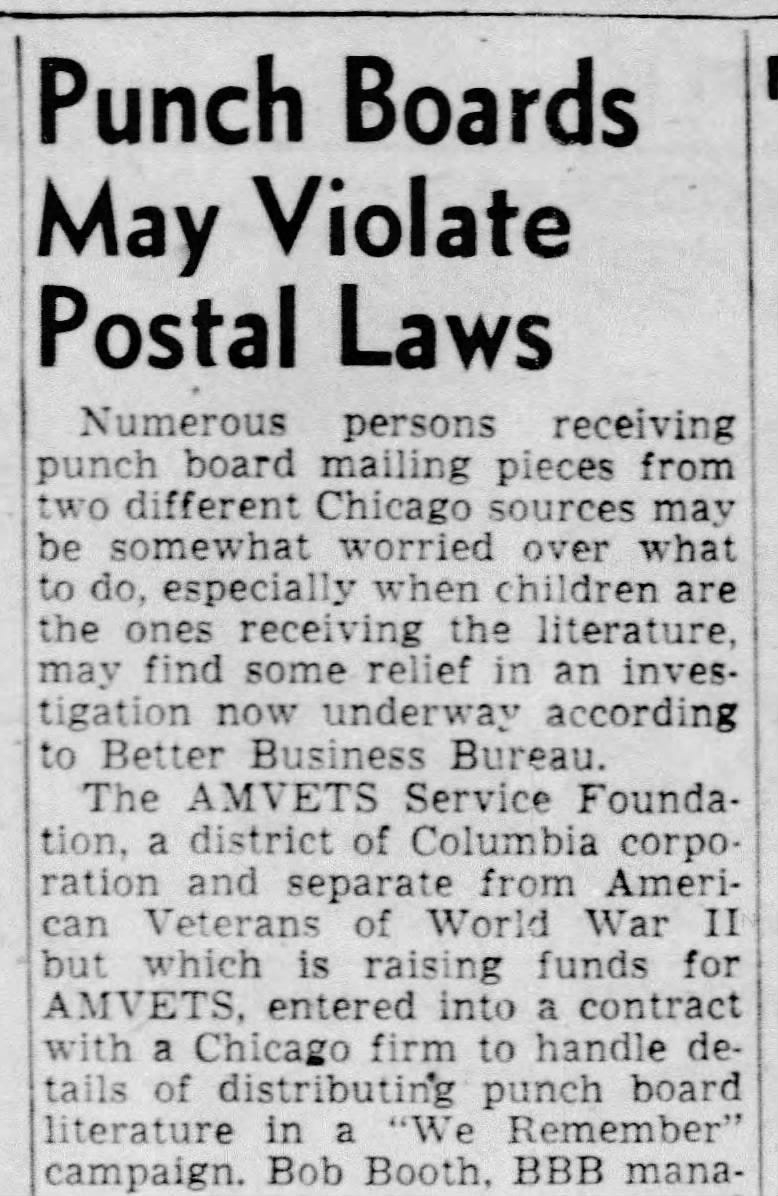Today's Tidbit... Football, Gambling, and Punch Boards
Gambling has a longstanding relationship with football. While the level of betting on football today would make our Puritan ancestors blush the deepest red, and a player or three faced suspensions for associating with gamblers, gambling has historically been low-key, seldom rising above the level of Super Bowl office pools.
We don’t often see horse manure on the garage floor anymore, and a form of gambling that is now seldom seen is the punch board. Once popular at corner taverns, many displayed risqué images of young women, while others capitalized on baseball or football themes.
The first punch boards were homemade, with sheets of paper pasted over the front and back of a wooden box. They filled one sheet of paper with circles or squares, and behind each was a hole or slot containing a rolled-up piece of paper listing a prize of no, minor, or reasonable value. After paying a penny, nickel, dime, or quarter, the player used a nail to punch through one of the holes, pushing the coiled paper out of its slot and allowing it to fall out the back of the punch board to reveal the patron's prize. Later, simpler versions were cardboard punch-outs, but the principle was the same.
No one ever lost or won a lot of money with a single punch, but they were easy to manipulate in the tavern keeper's favor by offering few prizes of value. Other tavern keepers received keys from the punch board producers that identified the slots with more valuable prizes, with regular patrons being told that a traveling salesman who came through town won the bigger prize.
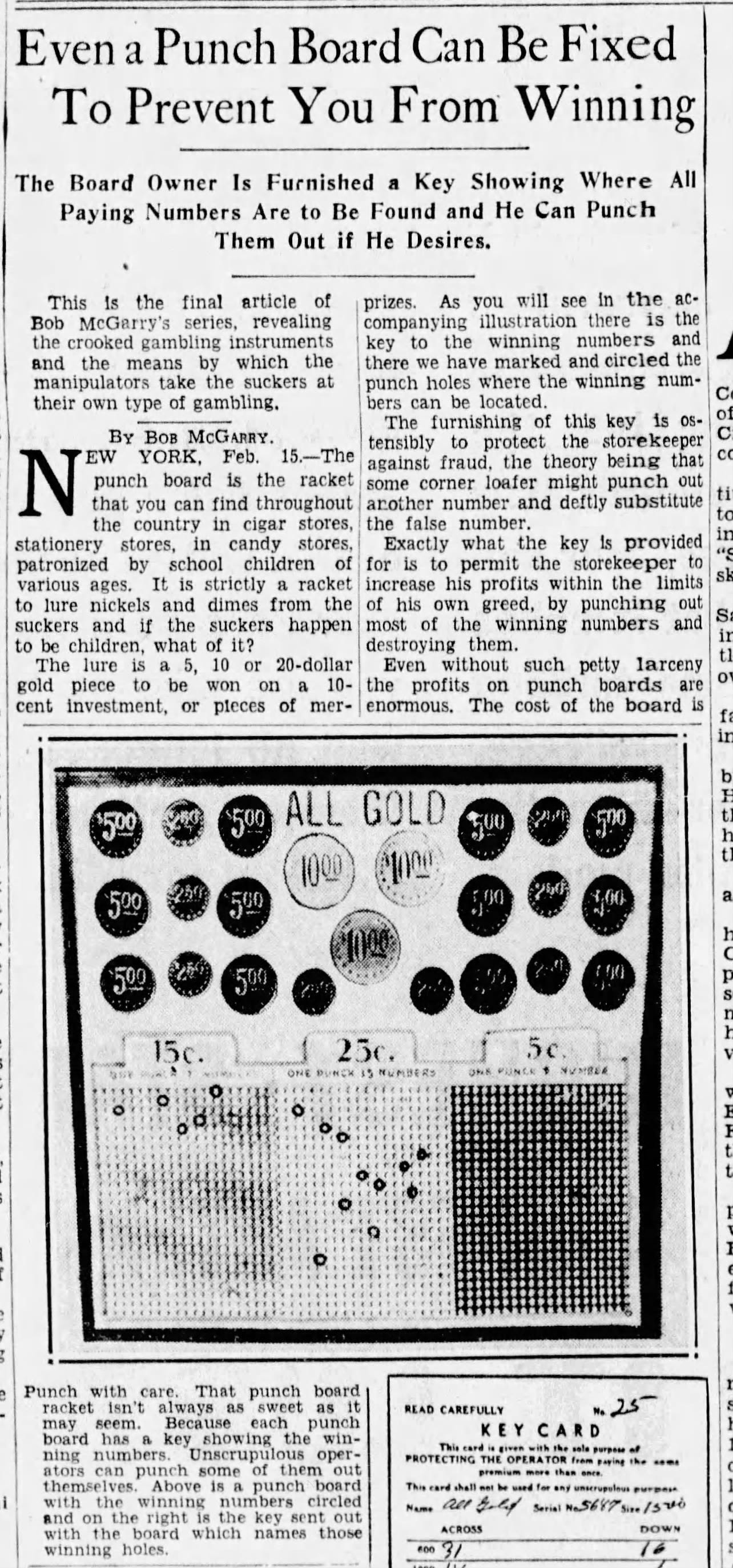
Regular readers know I enjoy football-related commercial art of almost any era, and many punch boards display fun artwork from a bygone era.
Punch boards may make a resurgence with the easing of gambling laws, but they disappeared in many locations after WWII. Some saw them as contributing to delinquency, depravity, and damnation. Plus, organized crime was said to encourage barkeeps to use their favored brand of punch boards in some locales.
So, local and federal constables began taking the punch out of those evil boards. A 1948 fundraising campaign for AMVETs that distributed punch boards nationwide ran afoul of postal regulations against the distribution of gambling items. Then, a 1951 IRS ruling required retail establishments to buy a $50 license to operate punch boards, with each clerk or bartender requiring a separate license.
By making punch boards more difficult to obtain and less profitable, punch boards disappeared, only to be replaced by Las Vegas and then widespread state-sanctioned and taxed gambling operations.
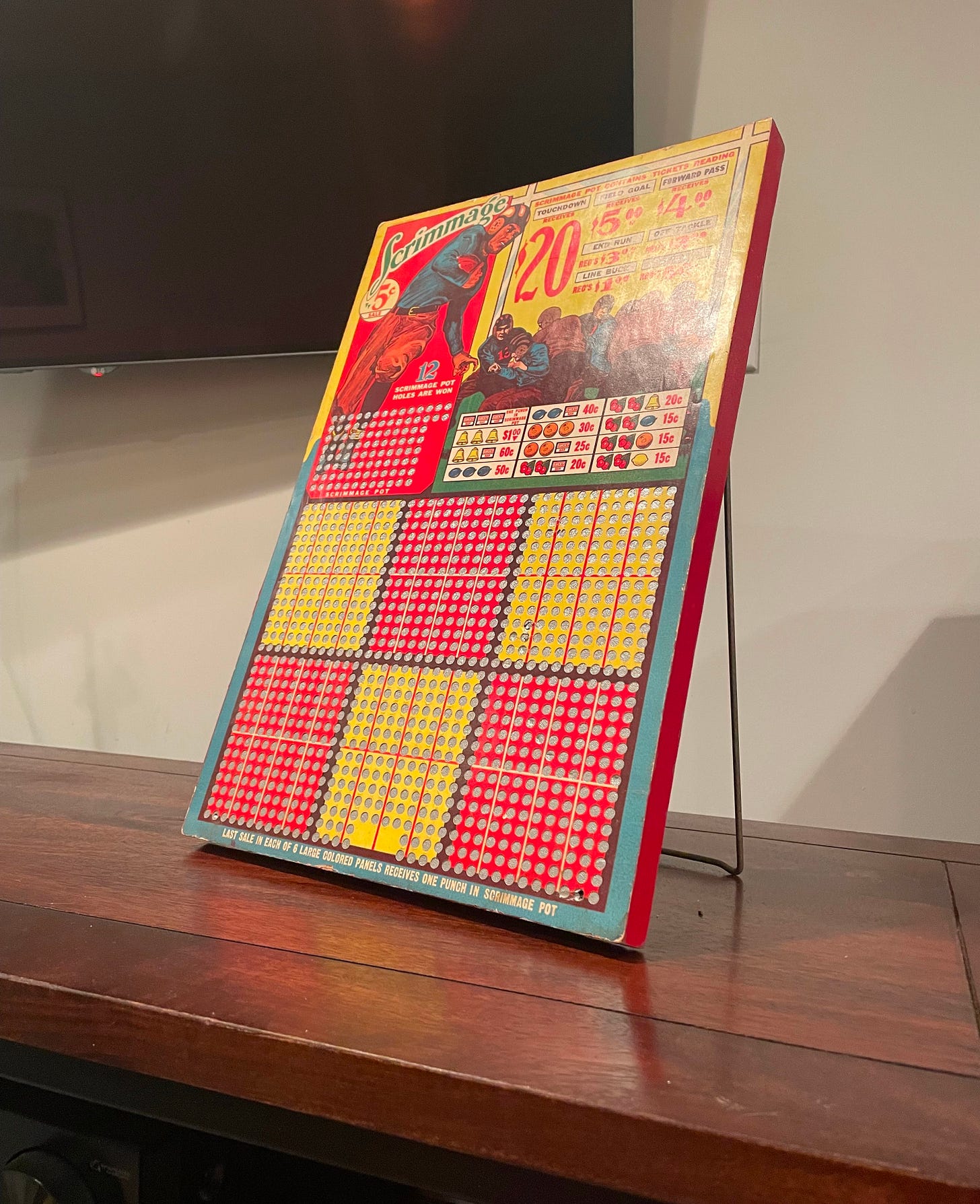
Today, we seldom see punch boards in taverns, but you can find them on eBay, Etsy, and other e-tailers, where shoppers gamble on the authenticity of their punch boards and other purchases.
Football Archaeology is reader-supported. Click here to buy one of my books or otherwise support the site.


